
Circumcision is a system that thrives on targeting the most vulnerable—parents who are uninformed and boys who cannot defend themselves. Proponents of circumcision, whether motivated by cultural norms, financial incentives, or misinformation, know exactly where and how to apply pressure to normalize this irreversible procedure.
If you’re the parent of an intact boy, knowing where these pressures are most likely to emerge is your best defense.
Let’s dissect the battlegrounds of circumcision advocacy and arm you with the tools to protect your child.
1. Hospitals: The Pressure Starts at Birth
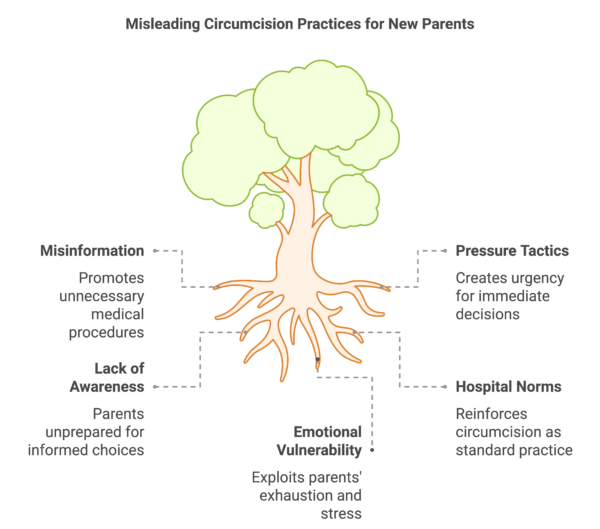
Hospitals are ground zero for circumcision advocacy. In many countries, particularly the United States, circumcision is framed as a standard part of newborn care.
- The Sales Pitch: Soon after birth, parents may be approached with pamphlets touting circumcision’s “health benefits,” often accompanied by statements from medical staff suggesting it’s the “norm.” This tactic preys on exhausted, overwhelmed new parents.
- The False Urgency: Hospitals often frame circumcision as a decision that must be made immediately, creating a false sense of urgency.
How to Protect Your Child:
- Do Your Research: Know the facts about circumcision before your child is born. Many so-called health benefits, such as reduced risk of infections, can be achieved with simple hygiene practices.
- Stand Firm: Make your wishes clear to the hospital staff. Consider including a written statement in your birth plan explicitly refusing circumcision.
2. Pediatricians: Subtle Nudges Over Time
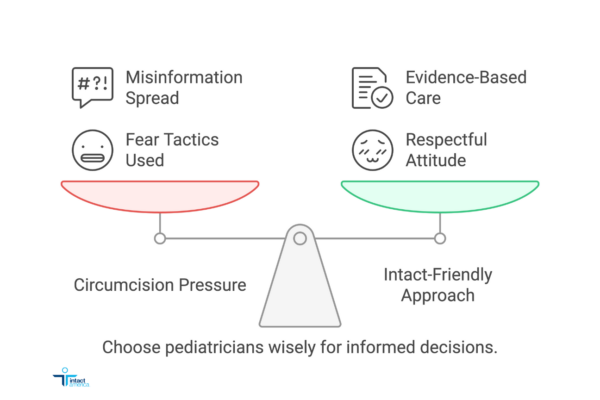
Pediatricians are another common source of circumcision pressure. While some doctors remain neutral, others push circumcision under the guise of preventing potential future problems.
- Fear Tactics: Common phrases like “It’s easier to do it now than later” or “You don’t want him to have problems down the road” rely on fear rather than evidence.
- Routine Checks: Some pediatricians may use routine genital exams as an opportunity to question the decision to leave a boy intact, subtly planting doubt in parents’ minds.
How to Protect Your Child:
- Choose an Intact-Friendly Pediatrician: Seek out a doctor who respects your choice and understands the normal anatomy and care of an intact penis.
- Be Prepared: Arm yourself with knowledge to counter misinformation. For example, conditions like phimosis in children are often misdiagnosed but usually resolve naturally with age.
3. Schools and Camps: Social Stigma as a Weapon
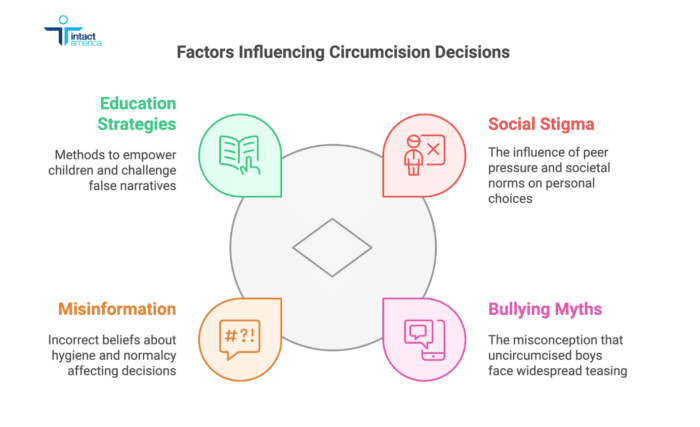
Circumcision advocacy isn’t limited to medical settings. Social stigma can be a powerful tool in environments where boys interact with peers, such as schools and camps.
- Bullying Myths: The fear of teasing or bullying for being intact is often cited by parents as a reason to circumcise, despite there being little evidence that this is a widespread issue.
- Misinformation: Well-meaning but misinformed adults in these settings may perpetuate myths about hygiene or normalcy, influencing both parents and children.
How to Protect Your Child:
- Educate Early: Teach your child about their body and empower them to understand and appreciate their anatomy.
- Challenge Misinformation: Speak to educators or camp leaders about respecting body diversity and avoiding stigmatizing language.
4. Religious Communities: Tradition as a Tool of Coercion
 Religious institutions often play a significant role in promoting circumcision, framing it as a rite of passage or spiritual obligation.
Religious institutions often play a significant role in promoting circumcision, framing it as a rite of passage or spiritual obligation.
- Cultural Pressure: Families within religious communities may face immense pressure to conform to traditional practices, even if they personally question the necessity of circumcision.
- Misusing Faith: Some leaders leverage religious texts to justify circumcision, ignoring alternative interpretations or the possibility of modern ethical considerations.
How to Protect Your Child:
- Question Tradition: Explore alternative ways to honor cultural or religious traditions without circumcision. Some families opt for symbolic ceremonies instead.
- Find Support: Seek out like-minded individuals within your community who share your views. You’re not alone in questioning outdated practices.
5. Pornography and Media: Shaping Perceptions of “Normal”
The media, particularly Western pornography, perpetuates the idea that circumcision is the “default” or “ideal” male appearance. This influences societal perceptions and reinforces the notion that being intact is unusual or undesirable.
- Body Image Issues: Boys and men may internalize these messages, feeling self-conscious about their natural bodies.
- Parental Influence: Parents exposed to these media representations may unconsciously adopt these biases and project them onto their decisions for their sons.
How to Protect Your Child:
- Promote Body Positivity: Normalize the diversity of male anatomy in your conversations with your child.
- Challenge Media Narratives: Discuss how media, including pornography, often distorts reality and reinforces harmful stereotypes.
6. Advocacy Organizations: Combating Misinformation
Circumcision advocacy groups often present biased or incomplete information to parents. They highlight the supposed benefits while downplaying the risks and ethical concerns.
- Funded Agendas: Many of these organizations have financial ties to medical institutions or cultural groups that profit from circumcision.
- One-Sided Messaging: Pamphlets, websites, and public health campaigns often omit key facts, such as the foreskin’s functions or the psychological impact of circumcision.
How to Protect Your Child:
- Seek Balanced Information: Turn to advocacy groups like Intact America or Doctors Opposing Circumcision for evidence-based resources.
- Ask Questions: Don’t hesitate to challenge biased messaging and demand full transparency about the risks and alternatives to circumcision.
Empowering Parents to Protect Boys
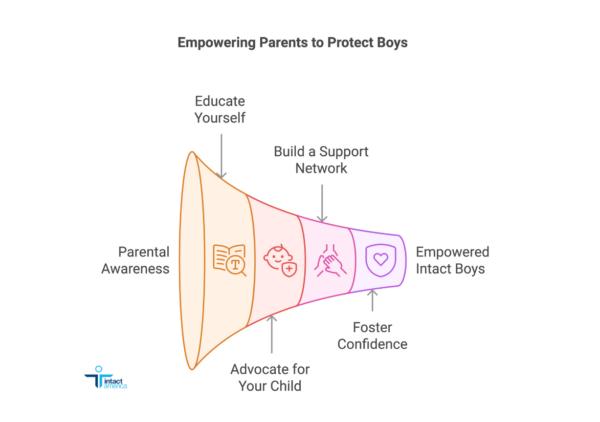 Protecting intact boys requires vigilance, education, and the courage to challenge deeply ingrained norms. Here’s how parents can take action:
Protecting intact boys requires vigilance, education, and the courage to challenge deeply ingrained norms. Here’s how parents can take action:
Educate Yourself
Understand the anatomy and care of an intact penis. Knowledge is your best defense against misinformation.
Advocate for Your Child
Speak up in medical settings, schools, and communities to ensure your child’s bodily autonomy is respected.
Build a Support Network
Connect with other parents and organizations who share your commitment to intactivism.
Foster Confidence
Teach your child to value their natural body and equip them with the tools to counter societal pressures.
Conclusion: The Right to Stay Whole
Circumcision advocates know exactly where to strike, but parents armed with knowledge and resolve can protect their sons from this outdated and unnecessary practice. By understanding the tactics used to target intact boys and taking proactive steps to counter them, you can ensure your child grows up with their body—and autonomy—fully intact. The fight for intactivism starts with each individual choice, and together, we can dismantle the culture of cutting.
Join us in defending bodily autonomy—every boy deserves control over his own body.





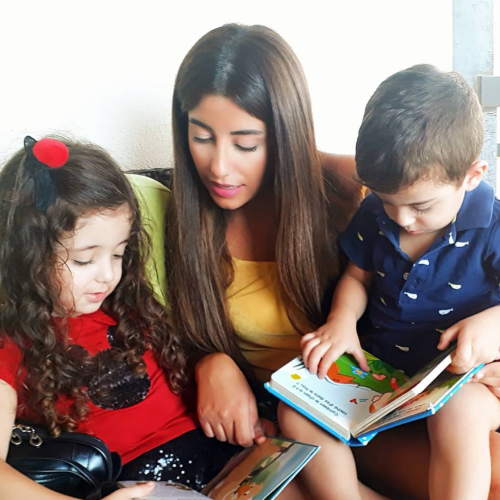
No Comments